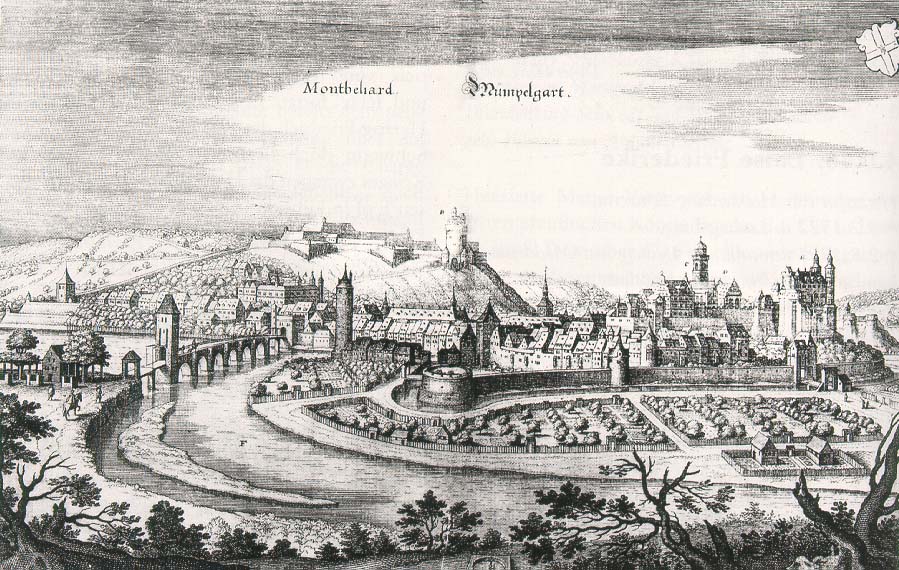|
Laire
Laire () is a commune in the Doubs department in the Bourgogne-Franche-Comté region in eastern France. Geography The commune is located from Montbéliard. History The name of the commune was originally spelled ''Layr'' and appears for the first time in 1231 in a charter of Thierry (Theodoric) III, Count of Montbéliard Population The inhabitants of Laire are called ''Niauds''. Trivia * Laire is a live action role playing game ("LAIRE" - Live Action Interactive Role-playing Explorers) located in Sparta, New Jersey, USA. The name is featured in the movie Role Models. France has its own history in medieval history and lore. See also * Communes of the Doubs department The following is a list of the 571 communes of the Doubs department of France. The communes cooperate in the following intercommunalities (as of 2020): [...More Info...] [...Related Items...] OR: [Wikipedia] [Google] [Baidu] |
France
France (), officially the French Republic ( ), is a country primarily located in Western Europe. It also comprises of overseas regions and territories in the Americas and the Atlantic, Pacific and Indian Oceans. Its metropolitan area extends from the Rhine to the Atlantic Ocean and from the Mediterranean Sea to the English Channel and the North Sea; overseas territories include French Guiana in South America, Saint Pierre and Miquelon in the North Atlantic, the French West Indies, and many islands in Oceania and the Indian Ocean. Due to its several coastal territories, France has the largest exclusive economic zone in the world. France borders Belgium, Luxembourg, Germany, Switzerland, Monaco, Italy, Andorra, and Spain in continental Europe, as well as the Netherlands, Suriname, and Brazil in the Americas via its overseas territories in French Guiana and Saint Martin. Its eighteen integral regions (five of which are overseas) span a combined area of and contain clos ... [...More Info...] [...Related Items...] OR: [Wikipedia] [Google] [Baidu] |
Communes Of The Doubs Department
The following is a list of the 571 communes of the Doubs department of France. The communes cooperate in the following intercommunalities (as of 2020):BANATIC Périmètre des EPCI à fiscalité propre. Accessed 3 July 2020. * Grand Besançon Métropole
Grand Besançon Métropole is the urban community, an intercommunal structure, centred on the city of Besançon. It is located in the Doubs department, in the Bourgogne-Franche-Comté region, northeastern France. It was created in December 2 ...
* [...More Info...] [...Related Items...] OR: [Wikipedia] [Google] [Baidu] |
Departments Of France
In the administrative divisions of France, the department (french: département, ) is one of the three levels of government under the national level (" territorial collectivities"), between the administrative regions and the communes. Ninety-six departments are in metropolitan France, and five are overseas departments, which are also classified as overseas regions. Departments are further subdivided into 332 arrondissements, and these are divided into cantons. The last two levels of government have no autonomy; they are the basis of local organisation of police, fire departments and, sometimes, administration of elections. Each department is administered by an elected body called a departmental council ( ing. lur.. From 1800 to April 2015, these were called general councils ( ing. lur.. Each council has a president. Their main areas of responsibility include the management of a number of social and welfare allowances, of junior high school () buildings and technica ... [...More Info...] [...Related Items...] OR: [Wikipedia] [Google] [Baidu] |
Communes Of France
The () is a level of administrative divisions, administrative division in the France, French Republic. French are analogous to civil townships and incorporated municipality, municipalities in the United States and Canada, ' in Germany, ' in Italy, or ' in Spain. The United Kingdom's equivalent are civil parishes, although some areas, particularly urban areas, are unparished. are based on historical geographic communities or villages and are vested with significant powers to manage the populations and land of the geographic area covered. The are the fourth-level administrative divisions of France. vary widely in size and area, from large sprawling cities with millions of inhabitants like Paris, to small hamlet (place), hamlets with only a handful of inhabitants. typically are based on pre-existing villages and facilitate local governance. All have names, but not all named geographic areas or groups of people residing together are ( or ), the difference residing in the l ... [...More Info...] [...Related Items...] OR: [Wikipedia] [Google] [Baidu] |
Communauté De Communes Du Pays D'Héricourt
The Communauté de communes du pays d'Héricourt is a ''communauté de communes'', an intercommunal structure, in the Haute-Saône and Doubs departments, in the Bourgogne-Franche-Comté region of France. Since January 2019, it consists of 23 communes. It has its administrative offices at Héricourt.CC du Pays d'Héricourt (N° SIREN : 247000722) BANATIC, accessed 8 April 2022. Its area is 163.6 km2, and its population was 21,078 in 2019.Comparateur de territoire [...More Info...] [...Related Items...] OR: [Wikipedia] [Google] [Baidu] |
Doubs
Doubs (, ; ; frp, Dubs) is a department in the Bourgogne-Franche-Comté region in Eastern France. Named after the river Doubs, it had a population of 543,974 in 2019.Populations légales 2019: 25 Doubs INSEE Its prefecture is Besançon and subprefectures are Montbéliard and Pontarlier. History As early as th ...[...More Info...] [...Related Items...] OR: [Wikipedia] [Google] [Baidu] |
Bourgogne-Franche-Comté
Bourgogne-Franche-Comté (; , sometimes abbreviated BFC; Arpitan: ''Borgogne-Franche-Comtât'') is a region in Eastern France created by the 2014 territorial reform of French regions, from a merger of Burgundy and Franche-Comté. The new region came into existence on 1 January 2016, after the regional elections of December 2015, electing 100 members to the Regional Council of Bourgogne-Franche-Comté. The region covers an area of and eight departments; it had a population of 2,811,423 in 2017. Its prefecture and largest city is Dijon, although the regional council sits in Besançon, making Bourgogne-Franche-Comté one of two regions in France (along with Normandy) in which the prefect does not sit in the same city as the regional council. Toponymy The text of the territorial reform law gives interim names for most of the merged regions, combining the names of their constituent regions separated by hyphens. Permanent names would be proposed by the new regional councils an ... [...More Info...] [...Related Items...] OR: [Wikipedia] [Google] [Baidu] |
Regions Of France
France is divided into eighteen administrative regions (french: régions, singular ), of which thirteen are located in metropolitan France (in Europe), while the other five are overseas regions (not to be confused with the overseas collectivities, which have a semi-autonomous status). All of the thirteen metropolitan administrative regions (including Corsica ) are further subdivided into two to thirteen administrative departments, with the prefect of each region's administrative centre's department also acting as the regional prefect. The overseas regions administratively consist of only one department each and hence also have the status of overseas departments. Most administrative regions also have the status of regional territorial collectivities, which comes with a local government, with departmental and communal collectivities below the region level. The exceptions are Corsica, French Guiana, Mayotte and Martinique, where region and department functions are ... [...More Info...] [...Related Items...] OR: [Wikipedia] [Google] [Baidu] |
Montbéliard
Montbéliard (; traditional ) is a town in the Doubs department in the Bourgogne-Franche-Comté region in eastern France, about from the border with Switzerland. It is one of the two subprefectures of the department. History Montbéliard is mentioned as early as 983 as . The County of Montbéliard or Mömpelgard was a feudal county of the Holy Roman Empire from 1033 to 1796. In 1283, it was granted rights under charter by Count Reginald. Its charter guaranteed the county perpetual liberties and franchises which lasted until the French Revolution in 1789. Montbéliard's original municipal institutions included the Magistracy of the Nine Bourgeois, the Corp of the Eighteen and the Notables, a Mayor, and Procurator, and appointed "Chazes", all who participated in the administration of the county as provided by the charter. Also under the 1283 charter, the Count and the people of Montbéliard were required by law to defend Montbéliard, while citizens of Montbéliard were not ... [...More Info...] [...Related Items...] OR: [Wikipedia] [Google] [Baidu] |
Count Of Montbéliard
Count (feminine: countess) is a historical title of nobility in certain European countries, varying in relative status, generally of middling rank in the hierarchy of nobility. Pine, L. G. ''Titles: How the King Became His Majesty''. New York: Barnes & Noble, 1992. p. 73. . The etymologically related English term "county" denoted the territories associated with the countship. Definition The word ''count'' came into English from the French ''comte'', itself from Latin ''comes''—in its accusative ''comitem''—meaning “companion”, and later “companion of the emperor, delegate of the emperor”. The adjective form of the word is "comital". The British and Irish equivalent is an earl (whose wife is a "countess", for lack of an English term). In the late Roman Empire, the Latin title ''comes'' denoted the high rank of various courtiers and provincial officials, either military or administrative: before Anthemius became emperor in the West in 467, he was a military ''comes ... [...More Info...] [...Related Items...] OR: [Wikipedia] [Google] [Baidu] |
Role Models
''Role Models'' is a 2008 American comedy film directed by David Wain, who co-wrote it with Timothy Dowling, Paul Rudd and Ken Marino. The film follows two energy drink salesmen who are ordered to perform 150 hours of community service as punishment for various offenses. For their service, the two men work at a program designed to pair children with adult role models. The film stars Seann William Scott, Paul Rudd, Christopher Mintz-Plasse, Bobb'e J. Thompson, Jane Lynch and Elizabeth Banks. Plot Danny and Wheeler are salesmen promoting the energy drink "Minotaur", supposedly to keep kids off drugs. Wheeler loves the job, while Danny considers it pointless and dead-end, making him depressed and jaded. Danny's uncouth behavior results in the collapse of his relationship with Beth, who breaks up with him after an impulsive proposal. After a botched presentation at a high school, Danny and Wheeler's Minotaur truck is towed from the no-parking zone. Danny tries to free the ... [...More Info...] [...Related Items...] OR: [Wikipedia] [Google] [Baidu] |
Communes Of Doubs
An intentional community is a voluntary residential community which is designed to have a high degree of social cohesion and teamwork from the start. The members of an intentional community typically hold a common social, political, religious, or spiritual vision, and typically share responsibilities and property. This way of life is sometimes characterized as an " alternative lifestyle". Intentional communities can be seen as social experiments or communal experiments. The multitude of intentional communities includes collective households, cohousing communities, coliving, ecovillages, monasteries, survivalist retreats, kibbutzim, hutterites, ashrams, and housing cooperatives. History Ashrams are likely the earliest intentional communities founded around 1500 BCE, while Buddhist monasteries appeared around 500 BCE. Pythagoras founded an intellectual vegetarian commune in about 525 BCE in southern Italy. Hundreds of modern intentional communities were formed ... [...More Info...] [...Related Items...] OR: [Wikipedia] [Google] [Baidu] |




